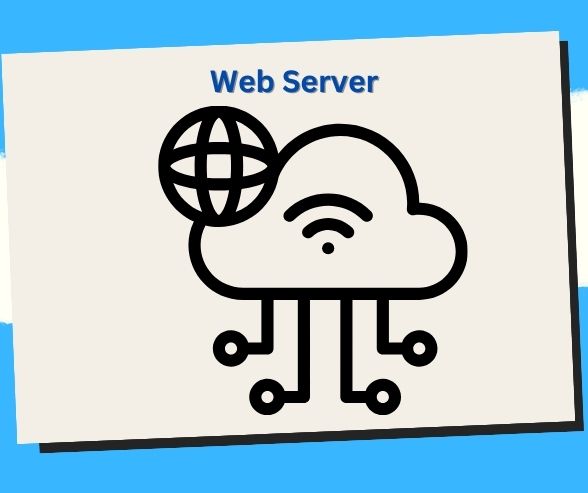
Maximize Your Potential: Strategies to Optimize Your Website for Business Growth
Ready to take your business to the next level? Learn how to optimize your website for increased growth and success.
How to Optimize Your Website for Increased Business Growth
In today’s digital age, a well-optimized website is essential for businesses looking to thrive and grow online. Your website serves as the virtual storefront for your business, and optimizing it for maximum visibility, usability, and conversion is key to attracting and retaining customers. From improving site speed to enhancing user experience and implementing SEO best practices, there are numerous strategies you can employ to optimize your website for increased business growth. In this guide, we’ll walk you through the steps to optimize your website effectively and drive business growth. 🖥️✨
1. Conduct a Website Audit
Before diving into website optimization, it’s essential to conduct a thorough audit of your website to identify areas for improvement. Evaluate your site’s performance, user experience, content, and technical aspects. Look for issues such as slow loading times, broken links, outdated content, and poor navigation. Use tools like Google Analytics, Google Search Console, and website auditing tools to gather data and insights about your site’s performance.
2. Improve Site Speed
Site speed is a critical factor that impacts user experience and search engine rankings. Optimize your website’s loading times by minimizing HTTP requests, optimizing images, leveraging browser caching, and using a content delivery network (CDN). Tools like Google’s PageSpeed Insights and GTmetrix can help identify performance bottlenecks and suggest optimizations to improve your site’s speed.
3. Enhance Mobile Responsiveness
With the increasing use of mobile devices, ensuring that your website is mobile-friendly is essential for providing a seamless user experience. Use responsive web design techniques to ensure that your site adapts to different screen sizes and devices. Test your website on various devices and screen resolutions to ensure that it looks and functions correctly on mobile devices.
4. Optimize On-Page SEO Elements
On-page SEO plays a crucial role in improving your website’s visibility in search engine results pages (SERPs). Optimize key on-page elements such as title tags, meta descriptions, headers, and image alt text with relevant keywords. Ensure that your content is well-structured, informative, and optimized for relevant search queries. Use internal linking to connect related pages and improve crawlability and indexing.
5. Create High-Quality, Relevant Content
Content is king when it comes to driving traffic and engagement to your website. Create high-quality, relevant content that provides value to your target audience. Regularly update your website with fresh, engaging content that addresses your audience’s needs, interests, and pain points. Incorporate a mix of blog posts, articles, videos, infographics, and other multimedia content to cater to different preferences and learning styles.
6. Optimize for Local Search
If your business serves a local audience, optimizing your website for local search is crucial for attracting nearby customers. Claim and optimize your Google My Business listing with accurate business information, including your address, phone number, and business hours. Optimize your website content and meta tags with local keywords, and create location-specific landing pages to target local search queries effectively.
7. Improve Website Navigation and User Experience
A user-friendly website navigation is essential for guiding visitors through your site and helping them find what they’re looking for efficiently. Simplify your website navigation menu, organize content into logical categories and subcategories, and include a search function to help users find specific information quickly. Ensure that your website is intuitive, easy to navigate, and accessible on all devices.
8. Implement Calls-to-Action (CTAs)
Calls-to-action (CTAs) prompt visitors to take specific actions on your website, such as signing up for a newsletter, downloading a resource, or making a purchase. Place clear and compelling CTAs strategically throughout your website to encourage user engagement and conversion. Use contrasting colors, persuasive language, and compelling visuals to make your CTAs stand out and attract attention.
9. Leverage Social Proof and Testimonials
Social proof plays a significant role in building trust and credibility with your audience. Display customer testimonials, reviews, case studies, and endorsements prominently on your website to showcase the positive experiences of past customers. Incorporate social proof elements strategically throughout your website, especially on key pages such as landing pages and product pages, to reassure visitors and encourage conversions.
10. Monitor and Analyze Performance
Regularly monitor and analyze your website’s performance using web analytics tools like Google Analytics. Track key metrics such as website traffic, bounce rate, conversion rate, and user engagement to gauge the effectiveness of your optimization efforts. Use this data to identify trends, uncover insights, and make data-driven decisions to further optimize your website for increased business growth.
Understanding Website Optimization Essentials 🌐
Website optimization encompasses a range of strategies aimed at improving various aspects of your website, from design and functionality to content and performance. Here are some key elements to consider:
- User Experience (UX): Ensuring that your website is user-friendly and intuitive is paramount for keeping visitors engaged and encouraging conversions.
- Search Engine Optimization (SEO): Optimizing your website for search engines can improve its visibility and ranking in search results, driving organic traffic and attracting qualified leads.
- Responsive Design: With an increasing number of users accessing websites on mobile devices, it’s crucial to ensure that your website is fully responsive and optimized for mobile viewing.
- Content Quality: Providing valuable, relevant content that meets the needs of your audience is essential for establishing authority, building trust, and driving conversions.
- Site Speed: A fast-loading website not only improves user experience but also contributes to higher search engine rankings and reduced bounce rates.
Benefits of Optimizing Your Website for Increased Business Growth 📈
- Improved User Experience: A well-optimized website provides a seamless and intuitive user experience, leading to increased engagement and satisfaction among visitors.
- Higher Search Engine Rankings: By implementing SEO best practices, you can improve your website’s visibility and ranking in search engine results, driving more organic traffic.
- Increased Traffic: Optimizing your website for search engines and user experience can attract more visitors, leading to higher levels of traffic and potential conversions.
- Better Conversion Rates: By streamlining the user journey and providing compelling calls-to-action, website optimization can increase conversion rates and generate more leads or sales.
- Enhanced Brand Credibility: A professionally designed and well-optimized website instills trust and confidence in your brand, positioning you as a credible and reputable authority in your industry.
- Competitive Advantage: A website that is optimized for performance, usability, and search engines gives you a competitive edge over businesses that neglect these crucial elements.
- Expanded Market Reach: A properly optimized website allows you to reach a wider audience, including potential customers who may be searching for products or services like yours online.
- Increased Customer Engagement: Optimized websites are more likely to keep visitors engaged and encourage them to explore further, leading to higher levels of interaction and repeat visits.
- Better ROI: Investing in website optimization can yield significant returns by driving more traffic, increasing conversions, and ultimately boosting revenue and profitability.
- Adaptability and Scalability: A well-optimized website is flexible and scalable, allowing you to adapt to changing market conditions and scale your business as needed.
Case Studies Illustrating the Impact of Website Optimization on Business Growth 🏆
- Amazon: Amazon’s relentless focus on website optimization, including personalized recommendations, fast-loading pages, and seamless checkout processes, has contributed to its status as the world’s largest online retailer.
- Google: Google’s commitment to user experience and website optimization is evident in its clean and intuitive interface, fast search results, and mobile-friendly design, leading to billions of daily searches and widespread adoption.
- Netflix: Netflix’s user-centric approach to website optimization, including personalized recommendations, easy navigation, and responsive design, has fueled its growth into a global streaming powerhouse.
- Shopify: Shopify’s user-friendly platform and extensive suite of optimization tools empower businesses of all sizes to create professional-looking websites, drive traffic, and increase sales without the need for technical expertise.
- HubSpot: HubSpot’s website optimization strategy, which includes SEO optimization, conversion rate optimization (CRO), and content marketing, has propelled its growth into a leading provider of inbound marketing software.
- Airbnb: Airbnb’s website optimization efforts, such as intuitive search filters, high-quality visuals, and user-generated reviews, have helped it become the go-to platform for booking unique accommodations worldwide.
- Adobe: Adobe’s commitment to website optimization, including mobile responsiveness, fast load times, and seamless user experiences across devices, has contributed to its success as a leading provider of creative software solutions.
- Uber: Uber’s website optimization strategy focuses on simplicity, speed, and accessibility, allowing users to book rides quickly and easily from any device, leading to widespread adoption and market dominance.
- Etsy: Etsy’s marketplace optimization, which includes search engine optimization, product recommendations, and seller tools, has helped it become a thriving platform for independent artisans and sellers.
- WordPress: WordPress’s commitment to website optimization, including customizable themes, plugins for SEO and performance, and intuitive content management, has made it the world’s most popular website-building platform.
Key Takeaways for Effective Website Optimization 📝
- Understand Your Audience: Conduct research to understand your target audience’s preferences, behaviors, and pain points, and tailor your website accordingly.
- Focus on User Experience: Prioritize user experience by optimizing navigation, design, and functionality to ensure a seamless and intuitive browsing experience.
- Implement SEO Best Practices: Optimize your website for search engines by incorporating relevant keywords, meta tags, and high-quality content that resonates with your audience.
- Optimize for Mobile: Ensure that your website is fully responsive and optimized for mobile devices to accommodate the growing number of mobile users.
- Improve Site Speed: Optimize loading times by optimizing images, minimizing HTTP requests, and leveraging caching techniques to improve user experience and SEO performance.
- Streamline Conversion Paths: Make it easy for visitors to take action by optimizing conversion paths, reducing friction, and incorporating clear calls-to-action throughout your website.
- Test and Iterate: Continuously test different elements of your website, such as design, messaging, and calls-to-action, and use data-driven insights to refine your optimization efforts.
- Monitor Performance: Regularly monitor key metrics such as traffic, engagement, conversion rates, and bounce rates to gauge the effectiveness of your optimization strategies.
- Stay Up-to-Date: Keep abreast of industry trends, algorithm changes, and best practices in website optimization to ensure that your website remains competitive and relevant.
- Invest in Professional Support: Consider hiring experts in website design, development, and optimization to ensure that your website meets the highest standards of performance and functionality.
Frequently Asked Questions (FAQ) About Website Optimization 🤔
- What is website optimization?
- Website optimization involves improving various aspects of your website, including design, functionality, performance, and content, to enhance user experience, increase visibility, and drive conversions.
- Why is website optimization important for business growth?
- Website optimization is essential for attracting and engaging visitors, converting them into customers, and maximizing the impact of your online presence, ultimately driving business growth and success.
- How do I optimize my website for search engines?
- To optimize your website for search engines, focus on incorporating relevant keywords, optimizing meta tags, creating high-quality content, and improving site speed and mobile responsiveness.
- What are some common website optimization techniques?
- Common website optimization techniques include SEO optimization, responsive design, site speed optimization, conversion rate optimization (CRO), and content optimization.
- How long does it take to see results from website optimization?
- The timeline for seeing results from website optimization can vary depending on factors such as the competitiveness of your industry, the effectiveness of your optimization efforts, and the current state of your website. Generally, it may take several weeks to months to see significant improvements in traffic, rankings, and conversions.
- What role does user experience (UX) play in website optimization?
- User experience (UX) is a critical aspect of website optimization, as it directly impacts visitor engagement, satisfaction, and conversion rates. A well-designed and intuitive website enhances user experience, leading to higher levels of engagement and conversions.
- How can I improve the performance of my website?
- To improve the performance of your website, focus on optimizing loading times, reducing page weight, minimizing HTTP requests, leveraging browser caching, and optimizing images and scripts.
- Should I invest in professional website optimization services?
- Investing in professional website optimization services can be beneficial if you lack the expertise or resources to optimize your website effectively. Professionals can provide valuable insights, guidance, and technical expertise to help maximize the performance and effectiveness of your website.
- What are some common pitfalls to avoid in website optimization?
- Common pitfalls to avoid in website optimization include neglecting mobile responsiveness, ignoring SEO best practices, using excessive or irrelevant keywords, sacrificing user experience for design, and failing to monitor and analyze performance metrics.
- How often should I update and optimize my website?
- Website optimization is an ongoing process that requires regular monitoring, testing, and iteration to keep your website competitive and effective. Aim to update and optimize your website regularly to stay aligned with industry trends, user preferences, and search engine algorithms.
Conclusion
By following these steps and implementing these tips, you can optimize your website effectively to drive business growth, attract more visitors, and convert them into customers. Remember that website optimization is an ongoing process that requires continuous monitoring, testing, and refinement. Stay proactive, stay informed about industry best practices and trends, and be willing to adapt your strategy to meet the evolving needs of your audience and business objectives. With dedication and strategic optimization, your website can become a powerful asset for driving business growth and achieving your goals. 🚀
Key Phrases
- Website optimization
- Business growth strategies
- Conversion rate optimization
- Digital presence enhancement
- Website performance improvement
- SEO techniques
- User experience enhancement
- Lead generation tactics
- Online visibility enhancement
- Website traffic generation
Best Hashtags
- #WebsiteOptimization
- #BusinessGrowth
- #ConversionOptimization
- #DigitalMarketing
- #SEO
- #UserExperience
- #LeadGeneration
- #OnlinePresence
- #WebsiteTraffic
- #MarketingStrategy
Save/Share this post with QR CODE
Disclaimer
This article is for informational purposes only and does not constitute endorsement of any specific technologies or methodologies and financial advice or endorsement of any specific products or services.
📩 Need to get in touch?
Feel free to Email Us for comments, suggestions, reviews, or anything else.
We appreciate your reading. 😊Simple Ways To Say Thanks & Support Us:
1.) ❤️GIVE A TIP. Send a small donation thru Paypal😊❤️
Your DONATION will be used to fund and maintain MKTGS.com
Subscribers in the Philippines can make donations to mobile number 0917 906 3081, thru GCash.
3.) 🛒 BUY or SIGN UP to our AFFILIATE PARTNERS.
4.) 👍 Give this news article a THUMBS UP, and Leave a Comment (at Least Five Words).
AFFILIATE PARTNERS

World Class Nutritional Supplements - Buy Highest Quality Products, Purest Most Healthy Ingredients, Direct to your Door! Up to 90% OFF.
Join LiveGood Today - A company created to satisfy the world's most demanding leaders and entrepreneurs, with the best compensation plan today.








Comments (0)